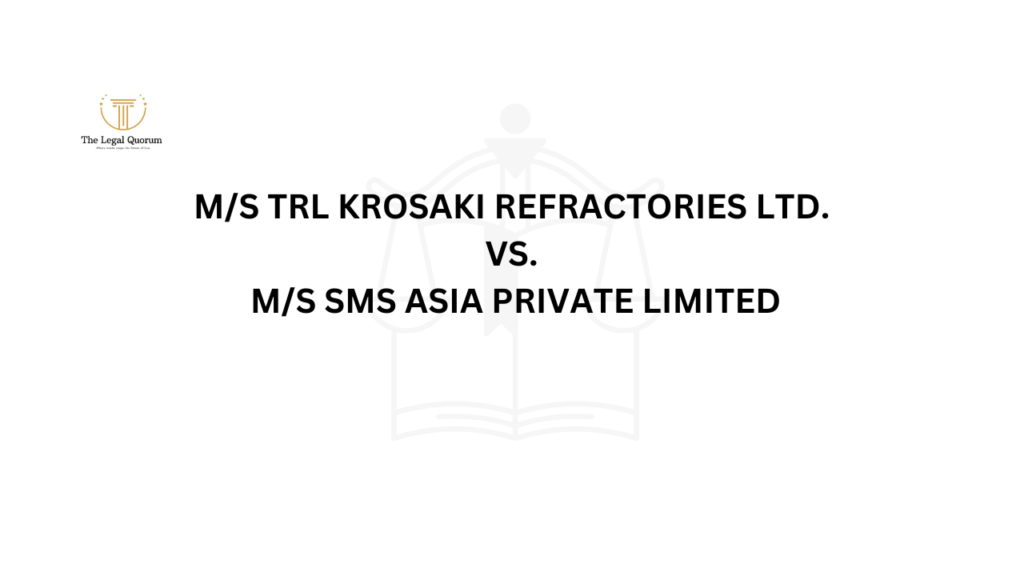Published On: 26th October, 2024
Authored By: Dorothy Kashyap
NEF Law College
The case involves a dispute between All India Tea Trading Co. Ltd. and Indian Oil Corporation & Others[1]. The judgment was made by the District and Sessions Judge, Cachar, Silchar in Misc. LA Case No. 54 of 1993 and Misc. LA Case No. 80 of 1993. The judgment awarded compensation of Rs. 14,000/- per bigha for a land measuring 240 bighas 8 kathas 9 lechas in LA Case No. 54 of 1993, and Rs. 5,000/- per bigha for patit land in L.A. Case No. 80 of 1993.
The acquired lands were a section of the Harincherra Division of Ballacherra Tea Estate. The High Court originally contested the award, but then sent it back for a new ruling, giving the parties the opportunity to provide evidence for Exhibits 5 to 11, which were not previously proven in accordance with the law. Following the submission of further evidence to support the sale deeds, a decision was issued on 24.12.2001, which determined the market value at the same rate.
The appellant, IOC, and respondents argue that the referral judge did not adequately evaluate the evidence on record. They argue that the lands involved in the transactions (Exts. 5 to 11) are agricultural lands, while the acquired land is a tea garden land with distinct potential and advantages. The Company argues that a thorough examination of the available information would demonstrate that the extensive tea estate property is situated directly on the PWD road. Furthermore, the Company asserts that the management would not manipulate the soil from various tea lands to acquire inaccurate results from the analyst.
The appellant argues that the government-approved surveyor, PW 2, failed to include a date in the survey report, which indicates that the property is situated next to both the PWD road and the road leading to the bottling plant. The geographical positioning of the site is essential in deciding the amount of compensation, and the IOC made efforts to demonstrate that the property was situated at a considerable distance from the PWD road and was not affected by flooding. Nevertheless, there is a lack of affirmative evidence to demonstrate that significant characteristics are not located in close proximity to the acquired property.
The court has to determine the market worth of the land as of the date when the notification was issued under Section 4 (1) of the Act. The court is required to evaluate the harm suffered by the individual concerned by considering the value of the standing trees and groves on the property at the time the collector took possession. The collector must also determine the harm suffered by the individual concerned at the time of the collector’s purchase of the land, due to the adverse impact on other property owned by the landowner or their income.
Mr. K.N. Choudhury, a senior counsel for the IOC, questioned the validity of the sale deeds Exts. 5 to 11. He said that because the individuals who sold and purchased the properties mentioned in these sale deeds have not been questioned, these unverified papers cannot be considered reliable. The 14 witnesses of the IOC have been scrutinized, revealing that the land’s valuation ranges from Rs. 2,000/- to Rs. 5,000/- per bigha.
The court has not yet addressed this particular element of the case. The appellant argues that the value of the acquired property should be lower than the assessment made by the referring court, relying on the Zirat list Ext. 4.
Mr. K.N. Choudhury, Senior Counsel, contended that the property in question was characterized by its rugged surroundings, lack of cultivation, presence of dense vegetation, proximity to agricultural areas, and vulnerability to flood. In his argument, he cited the precedent set by the Apex Court in the case of Manipur Tea Co. Ltd. Vs. Collector of Hailakandi[2], stating that the burden of proof for determining the market value under section 23 (1) of the Land Acquisition Act is on the claimants.
Mr. S. Chatterjee, an experienced attorney, argued that the sale deeds Exts. 5 to 11 were presented without any opposition and should be acknowledged as valid and authentic. The court determined that all the sale documents were accurate and that the sellers had completed the deeds between 1984 and 1989, before the date of purchase. The respondent’s legal representative argued that the market value of the acquired property should be determined by considering the worth of the whole land.
The Deputy Secretary to the Government of Assam, Revenue (LA) Department acknowledged that the assessment conducted by the collector is insufficient and urged the collector to reassess the land’s worth. The respondent’s legal representative additionally scrutinized the testimony of the witnesses presented by the Appellant Company. This evidence revealed that the lands involved in the transactions were harmed by floods and located far away from the acquired property.
Ultimately, the court determined that the lands bought and sold by the parties were impacted by flooding and located far away from the acquired property. This was enough reason to reject the sale documents presented by the appellant to the referral court.
The respondent and appellant contended that the value of tea garden property was much lower than agricultural land because there was a lack of comparable sale documents from other tea gardens. The District Agricultural Officer in Silchar, Cachar, had access to certain documents and declared an annual revenue of Rs. 700/800 per bigha. The presiding judge determined the value of the purchased property to be Rs. 14,000/-, however, the appellant contended that the multiplier should not exceed 10. The Supreme Court has ruled that the use of capitalization as a measure of valuation should only be considered when no other ways are available.
In this particular instance, the most favorable price was provided under the sale deed Ext. 11, indicating a land value of Rs. 38,200/- per bigha. The appellant’s legal representative contended that the compensation should be evaluated based on the presented and verified sale documents that demonstrate the transactions of agricultural lands. Nevertheless, the court determined that the value of tea estate land is greater than that of agricultural land due to the presence of a minimum of thirteen to fourteen thousand tea bushes per hectare, resulting in a significantly higher tea production compared to paddy production on agricultural lands.
The Supreme Court dismissed these appraisals, asserting that the amount proposed for the properties in different regions may not have undergone legal scrutiny. The court mandated payment after a reassessment at a rate of Rs.10,876/- per bigha, as established by the Collector. The ruling clearly states that the value of tea garden property is far more than that of agricultural land. Mr. Chatterjee, an experienced advocate, argues that the value of the land evaluated by the referral court is considerably lower than the amount determined by the Supreme Court in the referenced case.
Mr. K.N. Choudhury, a highly experienced counsel, said that a mandatory reduction of 33 1/3% should be applied towards development expenses when acquiring extensive property holdings. The claimant provided sale documents for agricultural property dating from 1984-88, and the purchase occurred in June 1989. Tea garden land has a greater value compared to agricultural land and exhibits superior output. The deduction of 33 1/3% would undermine the pursuit of justice. The Supreme Court noted that the value of tea garden property is relatively consistent regardless of its location in various districts. Allocating a 10% deduction for development would serve the principles of fairness and equity. The court of referral assessed the individual values of tea plants, firewood, and Zirat, and calculated the worth of the land by multiplying the yearly revenue by the appropriate capitalization rate for a period of twenty years. The court should take into account the worth of the agricultural land located near the purchased property and use the capitalization approach. The valuation of the tea plants, firewood, and trees determined by the reference court seems to be reasonable and does not warrant any intervention in these appeals. Both appeals are resolved by granting compensation of Rs. 12,600/- (for the larger property) and Rs. 4,500/- (for the smaller plot) per bigha, together with associated advantages.
Conclusion
All India Tea Trading Co. Ltd. and Indian Oil Corporation & Others are in a dispute over compensation for acquired land. The High Court initially contested the award but later reaffirmed it, allowing further evidence. The court determined the market value at the same rate. The appellant, IOC, and respondents argue that the referral judge did not adequately evaluate the evidence, and that the acquired land is a tea garden with distinct potential. The court must determine the market worth of the land and assess the harm suffered by the individual concerned.
The court ruled that the market value of the acquired property was insufficient due to the lands being impacted by floods and located far away from the property. The court also ruled that the value of tea garden property was higher than agricultural land due to the presence of a minimum of thirteen to fourteen thousand tea bushes per hectare. The court mandated payment after a reassessment at a rate of Rs.10,876/- per bigha, stating that the value of tea garden property is far more than that of agricultural land.
References:
[1] ‘Indian Oil Corporation Ltd vs All India Tea & Trading & Ors on 22 February, 2017’ (Indian Kanoon) <https://indiankanoon.org/> accessed 11 August 2024
[2] Kanoon I (The Manipur Tea Co. Pvt. Ltd vs The Collector Of Hailakandi on 13 December, 1996) <https://indiankanoon.org/doc/200515/#:~:text=It%20is%20sen%20that%20the,therefore%2C%20setting%20up%20of%20the> accessed 7 August 2024



